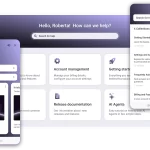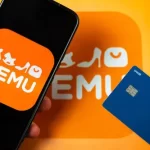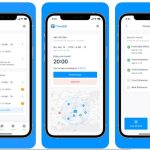App Store Optimization (ASO) assumes a great deal of importance if your goal is to gain traction and increase the number of app downloads (achieve growth). However, new app developers often do not take it very seriously. It is true that there is a great deal of overlap between ASO and search engine optimization (SEO), but you should understand that the App Store is just passing through its infancy stage. The aim of this post is to outline the key factors influence App Store ranking and provide a few tips as to how you can improve the same.
App Store Optimization or ASO – What Is It
It is important that your app is listed higher up in App Store search results in order to improve visibility. This serves to increase the number of people visiting your App Page (traffic) and the result is increased sales (app download). The techniques employed to achieve higher ranking in App Store search listings is referred to as App Store Optimization or ASO. For the ASO to be effective, a clear understanding about your target customers and the keywords they use to search for similar apps is very crucial.
ASO – Why Is It Important
Browsing the App Store is the most popular method employed by people to identify and download apps. In fact, 63 percent of the apps are found out by way of App Store searches, according to Forrester. Ankit Jain said recently in Google I/O 2015 that searches result in the installation of a vast number of average apps. This shows that you are missing out if you are not employing ASO and achieving higher App Store rankings.
App Store Optimization, your secret weapon, helps you to stand out among your competitors. All you have to do in order to achieve success is to spend some time on a weekly basis to improve your ASO and the ranking of your apps.
App Store Optimization – Step-by-Step Procedure
While some people don’t have any clue as to what ASO is, some others think it is the same as SEO. Though it is partially true that ASO is SEO applied to App Store, in reality it is far more deep, complex and interesting. Actually, the difference between ASO and SEO is in what users do after they visit the website or app page.
As far SEO is concerned, the process ends when potential customers visit your website. In fact, keywords included in the text helps your website to appear at the top in search listings. In the case of ASO, the goal is not increasing traffic, but ensuring that your app is visible to relevant and loyal users so that they can install and use it regularly. Therefore, ASO is not only about traffic, but also about conversion and paying attention to several other aspects when the visitor is on your page. The key steps involved in creating a great ASO experience are listed below:
#1: Keyword Research
Keyword research is similar to SEO and you have ASO tools like App Annie and SensorTower to help you do that. It is done to include relevant and sought-after terms into the content so as to lead potential customers on to your App Page. However, the trick is to strike a balance between varying levels of difficulty and traffic. It is really worth competing for certain keywords, but you need to choose them wisely. Often, it is simple App Store searches that drive organic traffic to your App Page.
#2: Description of the App
Keywords research is important to make best use of the search algorithms of Google and Apple. However, your app description is read by humans and it is they who decide whether to install your app or not. Therefore, keyword stuffing is not a good ASO strategy. Customers are not worried about keywords. They just want the app to be good.
#3: Logo of the App
The goal of having an app logo is not to just give an idea about your app. It should do much more than that. You can create an eye-catching logo by providing a 3-D effect to it. This makes your logo stand out among your competition.
#4: App Screenshots
Many developers think that screenshots are just a feature. This is not true and providing simple in-app shots does not help either. You should consider it as an advertising platform. If yours is an unfamiliar brand, then you should take it a little more seriously. The best option is to use the screen shots to narrate a story.
#5: Teaser Video
If at all you are planning to invest in creating a teaser video, the best option is to put potential users before Apple. This is because a recent study shows that Apple quickly approves videos with footage that provide more information than what is available in in-app footage. Teasers allow potential users to know what the product is capable of doing and more about the people who have created it. It also keeps potential users entertained and engaged.
#6: Market Research
Market research is all about understanding what you should or should not do by observing what competitors are doing. In the bargain, you may discover some keywords you might have been missing all these days. Make use of the measuring tools that are available and of course, your common sense, to regularly update your App Page.
#7: Reviews and Rankings
Users visiting your app page always examine the experience of previous users. The reviews section on Google Play is not only visible, but also prominent. Therefore, you should highlight the positive reviews you have received and post replies to negative reviews immediately. Users expect that you will provide an answer to their queries in about an hour.
#8: Name of Your App
In addition to being catchy and informative, the name of your app should include leading keywords as well. It is a challenging task as Google Play poses character limitations and Apple takes an unpredictable approach. Never settle for names that sound attractive and fun. Research well, but make it sweet and short.
#9: App Category
You need to choose the category correctly because it can affect your ranking. The factors to be considered when choosing the category include relevance, level of competition and revenue generated. The category you choose gives users a better idea about your app’s capability.
#10: Price of Your App
It is a little tricky to determine the worth of your apps to the users, especially because free apps available in plenty. However, you have to put a price to it so that it can be featured in the section “Apps on Sale.” Price the app correctly and make available special offers. It is also a good idea to make it part of your PR strategy and feature it on AppsGoneFree posts.
#11: Localization
You must provide the App Description in the language of your users. For example, if your target market is Korea, you should have your App Description in Korean as well. Further, separate keyword research should be done for the UK and US App Stores. There is no one-size-fits-all when it comes to ASO.
#12: Analytics
Your app title, description and screenshots are just the starting point. You must measure and optimize results on a regular basis by trying different keywords and changing the description and content suitably.
Finally, your App Page is your storefront and implementation of each of the ASO aspects mentioned above with view to attracting and creating emotional experience for users goes a long way in obtaining the best results.























Nice list of all key points of ASO. You can get much data from reviews and ranking analysis. Good ASO review mining tool can help you analyze the emotion behind comments, create alerts (with error notifications), and find out what users are saying about your application.